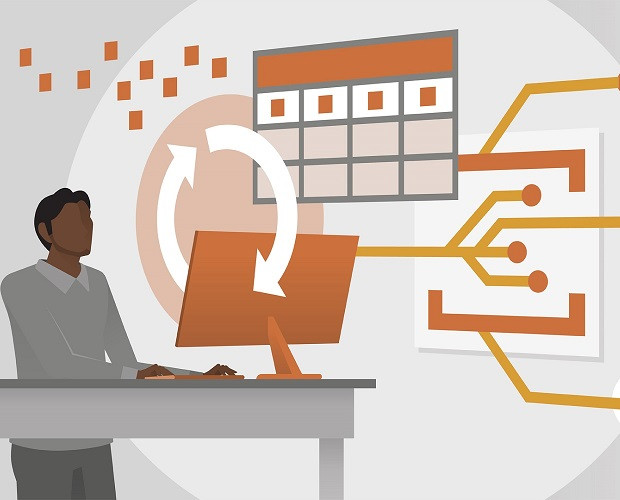MS-203: Microsoft 365 Messaging

Get ready for your exam by enrolling in our comprehensive training course. This course includes a full set of instructional videos designed to equip you with in-depth knowledge essential for passing the certification exam with flying colors.
$13.74 / $24.99
Managing the Messaging Infrastructure Lifecycle
-
1. Understanding the Exchange Deployment Process12m
-
2. Understanding Active Directory with Exchange On-Premise12m
-
3. Understanding Exchange On-Premise with Exchange Online13m
-
4. Performing the Exchange On-Premise Deployment14m
-
5. Using the Exchange Administration Center7m
-
6. (Part 1)Understanding Powershell with Exchange Management Shell13m
-
7. (Part 2)Understanding Powershell with Exchange Management Shell11m
Managing Modern Messaging Infrastructure
-
1. Working with Microsoft Exchange Databases9m
-
2. Considerations for Databases and Logs9m
-
3. Using iSCSI for Accommodating Database Storage7m
-
4. Implementing iSCSI for Mailbox Database Storage11m
-
5. Creating Mailbox Databases12m
-
6. Configuring Mailbox Databases9m
-
7. Troubleshooting Mailbox Databases7m
Managing Recipients and Devices
-
1. Understanding Recipients12m
-
2. Creating Mailboxes11m
-
3. Managing Shared Mailboxes10m
-
4. Creating Resource Mailboxes8m
-
5. Creating Recipients in Exchange Online5m
-
6. Using Powershell to Manage Exchange Online12m
-
7. Creating Multiple Mailboxes Using Comma Separated Value (CSV)9m
-
8. Managing Mailbox Permissions5m
-
9. Creating and managing Security and Distribution Groups11m
-
10. Managing Archive Mailboxes7m
-
11. Configuring Email Address Policies9m
-
12. Evaluating License Options8m
Manage Role-Based Permissions
-
1. Understanding Assigning Role6m
-
2. Admin Roles with AzureAD5m
-
3. Role Groups in Exchange Online4m
-
4. Working with RBAC roles for eDiscovery4m
Managing Mobile Devices
-
1. Configuring Mobile Device Mailbox Policies7m
-
2. Managing Mobile Device Access6m
-
3. Mobile Device Access with Exchange Online2m
Managing Database Availability Groups (DAGs)
-
1. Understanding and Planning DAGs and Settings8m
-
2. Creating a Database Availability Group (DAG)10m
-
3. Managing your Database Availability Group (DAG) members and its health11m
Planning and Managing Organizational Settings
-
1. Understanding the Global Address List6m
-
2. Managing the Global Address List9m
-
3. Understanding the Offline Address Book (OAB)4m
-
4. Working with the Offline Address Books (OABs)7m
-
5. Configuring Organizational Sharing9m
-
6. Managing Add-ins5m
Managing Public Folders
-
1. Understanding Public Folders7m
-
2. Creating Public Folders in On-Premise Exchange12m
-
3. Working with Public Folders in Exchange Online3m
-
4. Planning a Public Folder Migration to Microsoft 3655m
Managing and Implementing Client Access
-
1. Understanding Client Access Services in Exchange8m
-
2. Configuring Virtual Directories and URLs12m
-
3. Working with Namespaces in Exchange Online7m
-
4. Configuring Client Access Policy Rules13m
-
5. Autodiscover in Exchange15m
-
6. Understanding Internal and External Certificates8m
-
7. Installing a CA for Exchange Certificates7m
Managing Disaster Recovery
-
1. Planning Backup and Recovery13m
-
2. Implementing and Performing a Backup8m
-
3. Performing an Exchange Restoration15m
Managing Mail Flow Topology
-
1. Understanding the Exchange Transport Architecture10m
-
2. Mail Flow Transport Rules in On-Premise Exchange13m
-
3. Mail Flow Transport Rules in Exchange Online8m
-
4. Accepted Domains with Exchange On-Premise4m
-
5. Domains in Exchange Online5m
Managing Connectors
-
1. Understanding Connectors7m
-
2. Creating Send and Receive Connectors with Exchange Server10m
-
3. Creating Exchange Online Connectors8m
Managing Compliance
-
1. Configuring Retention Policies in the EAC6m
-
2. Configuring Retention Policies in Microsoft 3653m
-
3. Understanding Data Loss Prevention (DLP)9m
-
4. Configuring Data Loss Prevention Policies (DLP)7m
-
5. Managing Journal Rules6m
-
6. eDiscovery with Litigation, In-Place and Retention Holds4m
-
7. Configuring eDiscovery and holds5m
Manage message hygiene using Exchange Online and Office 365 …
-
1. Advanced Threat Protection (ATP) Safe Attachments and Safe Links9m
-
2. Configuring ATP Safe Attachments and Safe Links9m
-
3. Connection Filters3m
-
4. Configuring Malware Filters5m
-
5. Configuring Spam Filters5m
-
6. Managing Protection For Phishing with ATP Anti-Phishing7m
-
7. Monitoring Quarantined Items2m
Planning and Implementing Migrations
-
1. Cutover Migrations5m
-
2. Minimal Hybrid Migrations9m
-
3. Full Hybrid Co-Existence Migrations7m
-
4. PST, IMAP, and Third Party Migrations7m
-
5. Performing a Migration9m
Troubleshoot Mail Flow Problems
-
1. Examining Message Trace in Exchange Online8m
-
2. Examining Message Trace in O365 Security and Compliance6m
-
3. Configuring Message Tracking6m
-
4. Analyzing Non-Deliverable Reports6m
-
5. Analyze Message Headers with the Remote Connectivity Analyzer7m
-
6. Investigating Transport Logs7m

